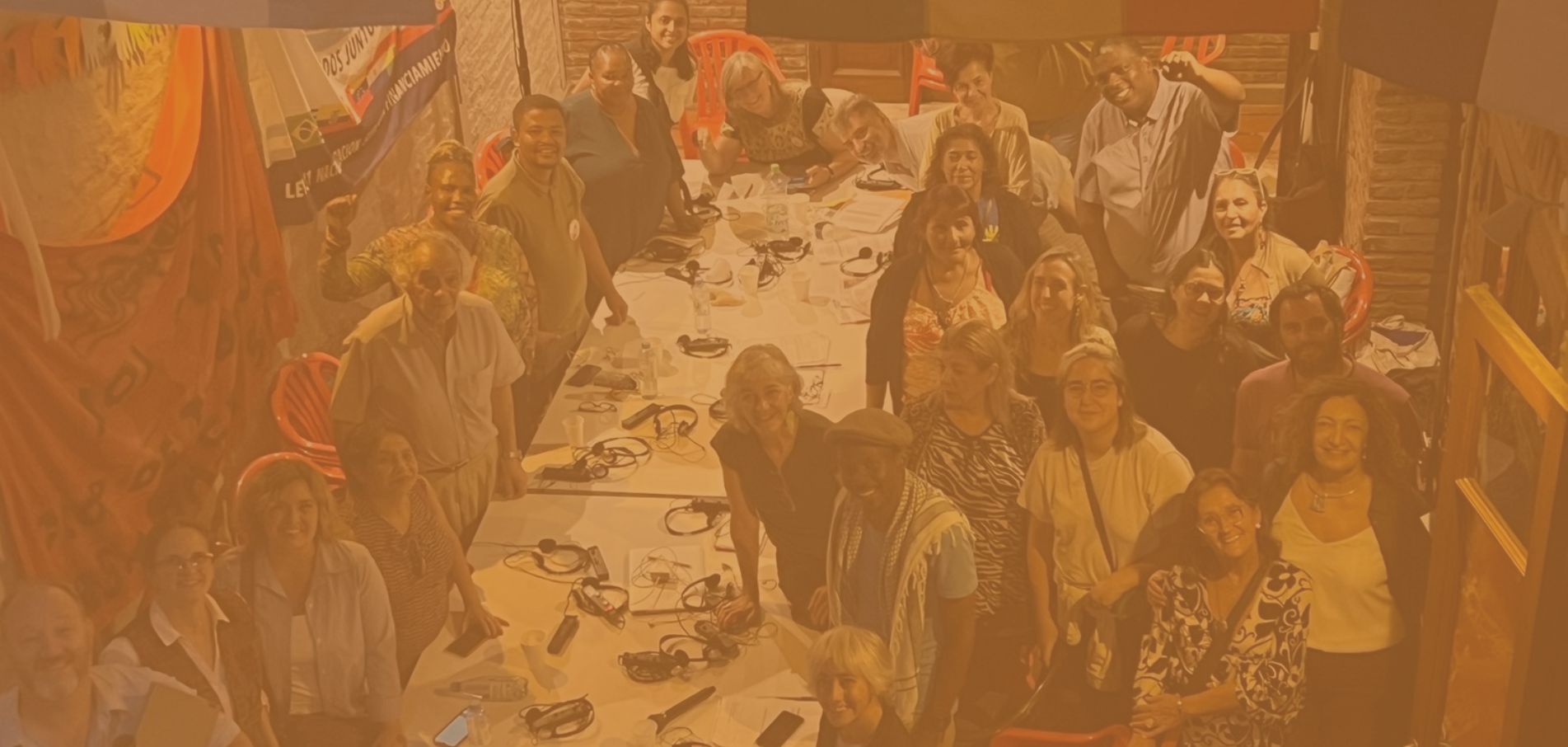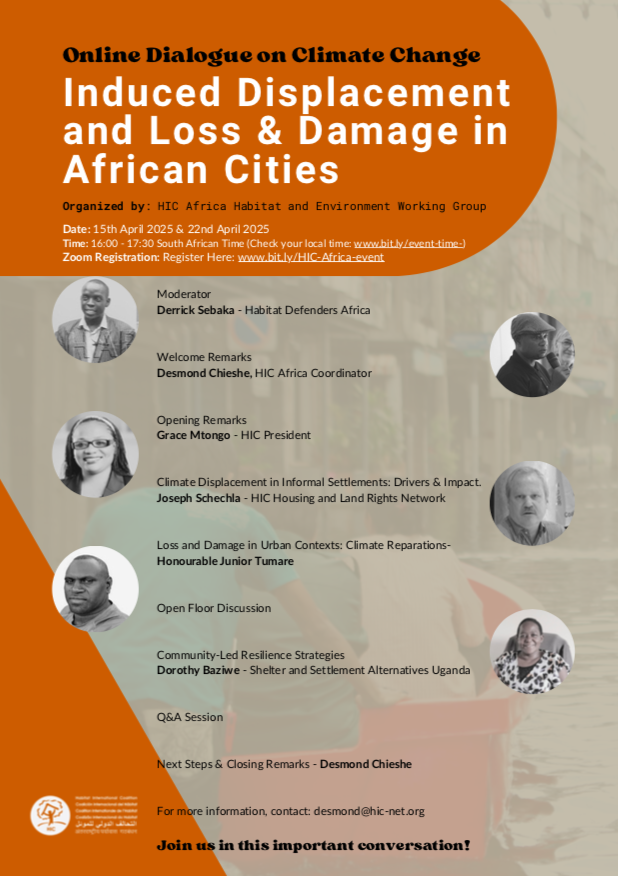
By Edmundo Werna[1]
“Gated communities are a sign of bad urbanization”.
Joan Clos is the former head of UN-Habitat and the Secretary-General of Habitat III, which produced the New Urban Agenda. When referring to affluent communities, he adamantly emphasized the aforementioned statement. But there is a more disturbing phenomenon to which he did not pay attention: compulsory gated communities of poor construction workers, bonded to their contracts. Migrant workers who are not allowed to leave their dormitories except for going to the worksites. If only Clos knew; there are also cases in which the extremes meet: gated rich communities built by workers who live in gated/bonded poor communities (Kumar & Fernandes, 2017). The silence of Habitat III’s Secretary-General regarding the bonded communities is an illustration that the urban workers and their rights need more attention (Werna & Klink, forthcoming).
Cities and towns will not be sustainable if the livelihood of its inhabitants is not addressed. At the same time that poverty is a toll on the living conditions of large numbers of urban dwellers, it limits the capacity of the workers to fully contribute to the development of their cities. Initiatives such as upgrading of low-income neigbourhoods, inner-city regeneration, infrastructure provision and others will be viable and lead to inclusive growth when employment-generation and working conditions are properly addressed. This will only happen if the rights of urban workers are respected.
Examples from the urban front
Many urban workers still face challenges related to their rights, with implications for their living and working conditions and productivity. Examples include bonded labour, wages below the legal minimum, poor working conditions, child labour, discrimination against female workers, lack of social protection (Lawrence & Werna, 2009; Lawrence, Gil, Fluckiger, Lambert & Werna, 2008).
The illustration given in the beginning of this piece falls into the category of bonded labour, which is particularly found in construction, garment factories and domestic work.
Regarding wages and working conditions: in a context of expanding supply of urban labour, employers many times offer low wages and do not comply with work quality regulations. Casual and informal workers are particularly at risk. Nowadays the ‘triangular employment relationship’ (contractors – subcontractors and labour agents – workers) is usual, and leads to casualization. Under such conditions, workers’ rights are often unclear and they enjoy less protection from the law than those who are directly employed. Even workers who are directly employed often accept unfavourable conditions, because the alternative is no work at all. Informal workers, by definition, are outside the boundaries of the law, making it challenging for them to demand their rights. Migrant workers, who abound in urban areas, are also at risk as they often have to accept precarious working conditions in order to survive in their host cities. This is particularly frequent for sectors such as construction, domestic services and commerce but is also encountered in others (Habitat International, 2008.) . Finally, the large numbers of self-employed workers who do not have a direct employer also suffer from inappropriate working conditions (e.g. street vendors).
Child labour is another issue that deserves special attention because of the moral imperative and an adverse effect that is has on education, which makes it difficult to find decent work later in life. In addition, the existence of child labour diminishes the opportunities for adult workers to find employment. A large number of urban children do not have proper care from their families and many are orphans of the HIV-AIDS epidemic. This trend renders young people increasingly vulnerable to exploitation, illegal, underground, and hazardous activities (ILO, 2010 & 2011). This is particularly notable in commerce, domestic services, waste picking and recycling, and peri-urban activities related to production of building materials, low-income housing construction, water collection and support to different types of home-based enterprises.
There is also substantial evidence of deficits in the rights of female workers, which points to the lack of equal treatment compared to their male counterparts and the existence of harassment (Habitat International, 2008; ILO, 2021; Gil & Werna, 2009; Kumar and Fernandes, 2017).
Lack of social protection of workers is a major cause of poverty. Numerous urban workers and small-scale entrepreneurs in different sectors of the urban economy do not have access to an adequate system of healthcare, paid leave, protection against loss of pay when laid off, ill health, accidents or old age. Without adequate social protection, the smallest of the crises can ruin their livelihoods. Should one income earner in the household be injured or fall sick, the family risks falling into absolute despair, poverty, child labour, or debt (Habitat International, 2008; Lawrence and Werna, 2009).
Unconventional workplaces
More and more people resort to working from home, to cut costs. Home-based work entails not only the upper end of the market (those who work via the internet), but also a large number of low- and middle-income workers providing goods and services such as pre-cooked food, textiles and garments, repairs of equipment and other services. There are important issues related to rights, such as how urban zoning, land use planning and building codes can and should address work inside housing units.
If a given large portion of workers are going home to make a living, another good number works from public spaces as they do not have another option. This requires a discussion on public policies related to the built environment, plus work licenses. For example, the use of public markets, access to hygienic facilities, building up shops in public land (the workplace equivalent of building slum accommodation in public land). Cases of harassment and eviction of street workers and their facilities have been reported in many countries.

Governance
Workers’ representation and dialogue are considered essential by the ILO (International Labour Office) for pursuing employment rights (ILO, 2002). This requires a commitment from both national and local governments in protecting and reinforcing the right to organization and voice for workers.
The movement to the ‘right to the city’ is one of the ways in which improvement of employment conditions can be linked to the mainstream of urban development. Realizing the ‘right to city’, an idea propagated by iconic champions of the labour movement, such as Henry Lefebvre (1968) and David Harvey (1973), and now a burgeoning movement, refers to a collective effort to reshape the process of urbanisation. It requires demands, pressure and struggle.
Workers’ groups have traditionally constituted a powerful lever to obtain rights in the cities where they lived and worked. The workplace had been an important locus for collective gathering and struggle for the ‘right to the city’.
During the times of mass-production with assembly line factories, workers’ claims to their rights were blended into the right to the city. In the current systems of production, with increasing informal and indentured labour, self-employed workers, one person enterprises and other types of work without much possibilities of getting together, it is important to reinvent ways to organize and defend workers’ rights. Legislation is fundamental to provide a legal framework to the right to the city (land tenure, building codes, etc.).
An international set of tools that can support the right to the city, simultaneously improving employment conditions, is the ILO’s International Conventions. They are international treaties ratified by countries on a voluntary basis. Once ratified, they become legally binding. Although there are no conventions that would be explicitly “urban”, many of them can indeed be used in the urban context, for example conventions related to (a) public works; (b) occupational health (with connections to environmental health); (c) rights of women, (d) rights of migrants, (e) rights of children, and many others. Therefore, International Conventions can be used as instruments of pressure to implement the right to the city (in the countries that ratified them).
Another type of instrument of the ILO are the Recommendations, which serve as non-binding technical guidelines. Recommendations can also be used as instruments of pressure and policy formulation. For example, the recent Recommendation 204 on the informal sector has been widely used by civil organizations such as WIEGO, StreetNet and others to support informal workers.There is also a recommendation about the right to housing (R115). It can be a powerful tool for advocacy. It is about adequate housing for the workers and their families (including unemployed workers) – essentially, the whole population.
Importantly, a national government must not only sign and ratify treaties guaranteeing rights, but also implement them as a minimum obligation. Central governments can also go beyond the international conventions and enforce further regulations. Local governments, while respecting national laws, can also go beyond, enforcing further regulations and addressing specific issues pertinent to a given municipality or municipalities that may not be captured in national regulations. Groups of urban workers, grassroots communities, NGOs and urban citizens in general also have an important role to play, by making their voices heard in regard to regulations that they feel need to be in place.
Many of the problems well noted by HIC in regard to housing, WASH, other elements of the city and indeed the city as a whole are intertwined with workers’ rights. In this sense, partners organizations like WIEGO and the Global Platform for the Right to the City advocate for the need for decent worker’s protection to guarantee workers’ right to the city at many levels: from the political participation, the access to essential services to the enjoyment of public spaces as mentioned before. As highlighted by WIEGO, the right to a decent work is essential in the collective construction of our cities and the guarantee of the right to the city for all. This approach is particularly relevant not only for the right of workers’ in general but also to acknowledge the role of informal workers in providing critical services without adequate protections and pay, even in this time of pandemic.
Through her his work, a person should not only get the deserved reward to acquire necessary goods and services. Also, work is an important means of socialization and a way to contribute to the development of one’s settlement. Work is an important part of urban citizenship.
REFERENCES
. Gil, M. & Werna, E. (2009). “Local Authorities and the Construction Industry”, in Roderick, L. and Werna, E. (eds.) (2009), Labour Conditions for Construction: building cities, decent work and the role of local authorities, Wiley-Blackwell: Oxford, pp. 51-81.
. Habitat International (2008). “Labour in Urban Areas”. Special Issue edited by Edmundo Werna. Habitat International, 2(2).
. Harvey, D. (1973). Social justice and the city. University of Georgia Press: Athens (USA).
. ILO (International Labour Organization)(2021). How women are being left behind in the quest for decent work for all. ILO/ILOSTAT. Retrieved 14 May 2021 https://ilostat.ilo.org/how-women-are-being-left-behind-in-the-quest-for-decent-work-for-all/
. Lawrence, R. and Werna, E. (Eds.) (2009). Labour Conditions for Construction: Building Cities, Decent Work and the Role of Local Authorities. Oxford: Wiley-Blackwell.
. Lawrence, R.: Gil, M.: Fluckiger, Y.; Lambert. C. & Werna,E. (2008). Conclusions and Recommendations, in Roderick, L. and Werna, E. (eds.), Labour Conditions for Construction: building cities, decent work and the role of local authorities, Wiley-Blackwell: Oxford, pp. 51-81. 236-249.
. Lefebvre, H. (1968). Le droit à la ville. Éditions Anthropos : Paris.
. Kumar, S. and Fernandez, M. (2017). The Urbanisation-Construction-Migration Nexus in Five Cities in South Asia: Kabul, Dhaka, Chennai, Kathmandu and Lahore. Final Report. Research of the London School of Economics and Political Sciences, funded by DfID. London: LSE.
. Werna, E. & Klink, J. (forthcoming). “The Builders of Cities: Prospects for synergy between labour and the built environment”. Chapter for a forthcoming book edited by Prof. George Ofori. Elgar Research Companion on Construction Economics.
*****************************************************
[1] Centre for the Integrated Delivery of the Built Environment (IDoBE), School of the Built Environment and Architecture, London South Bank University. edwerna@lsbu.ac.uk


